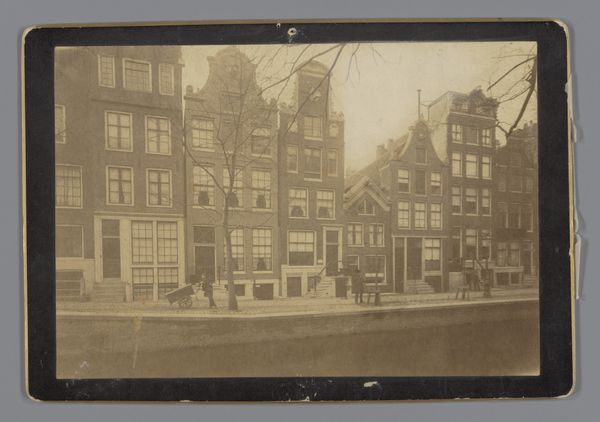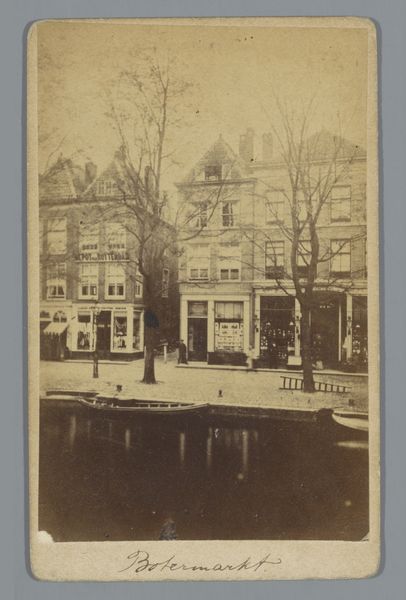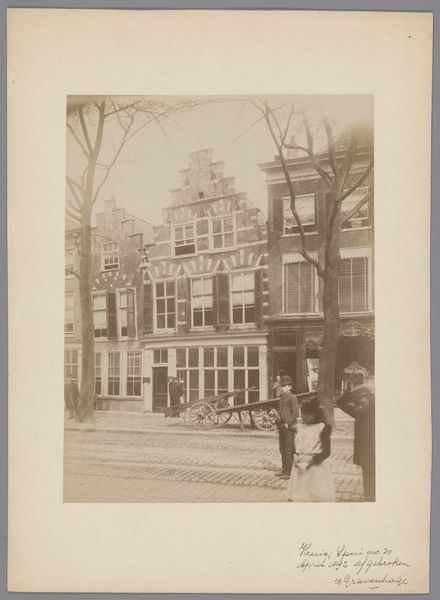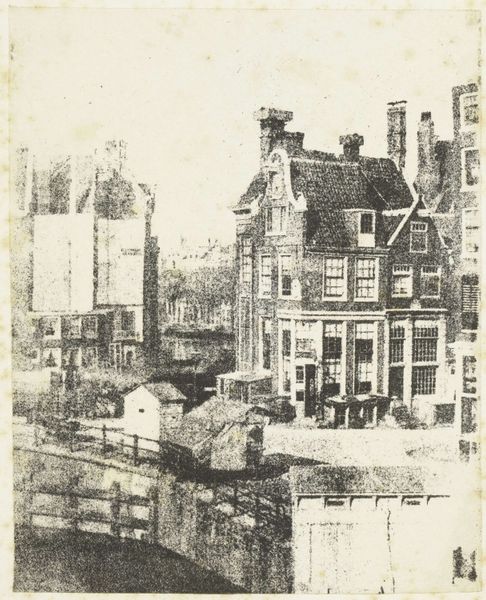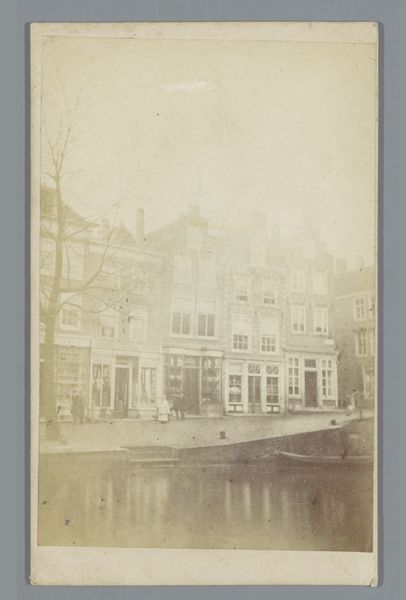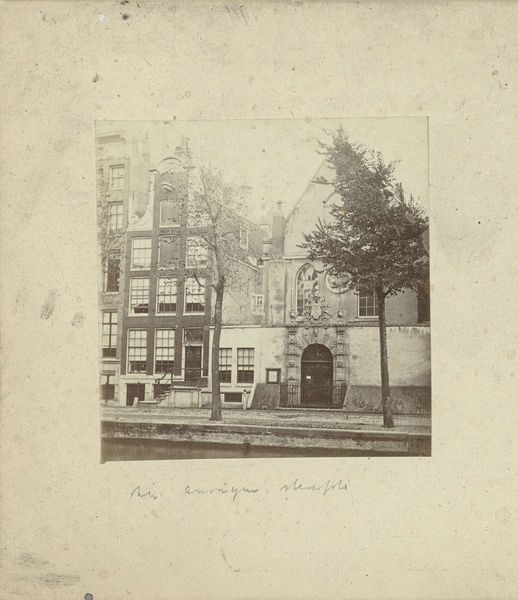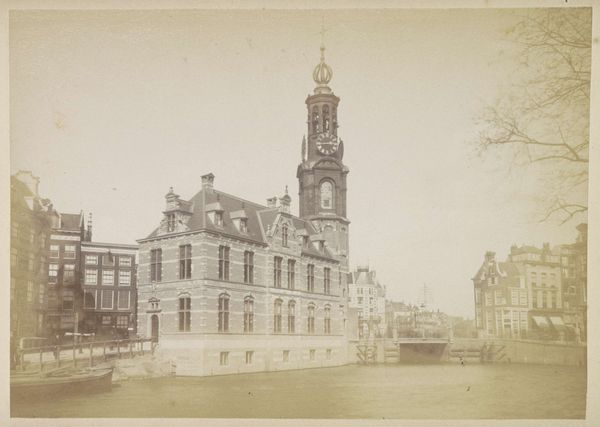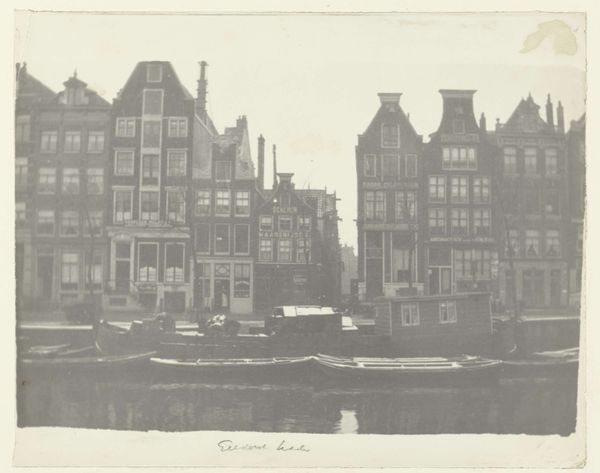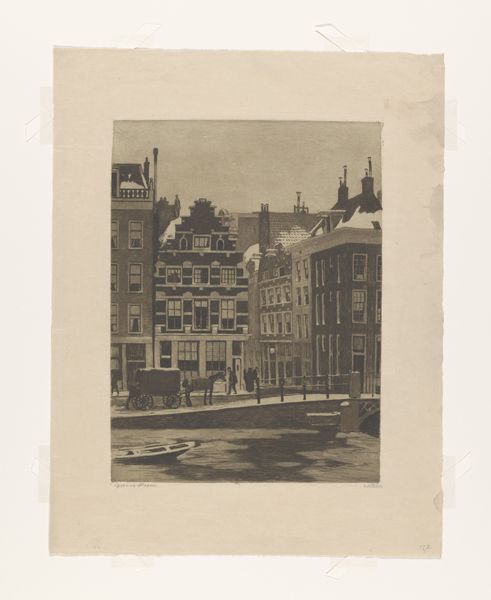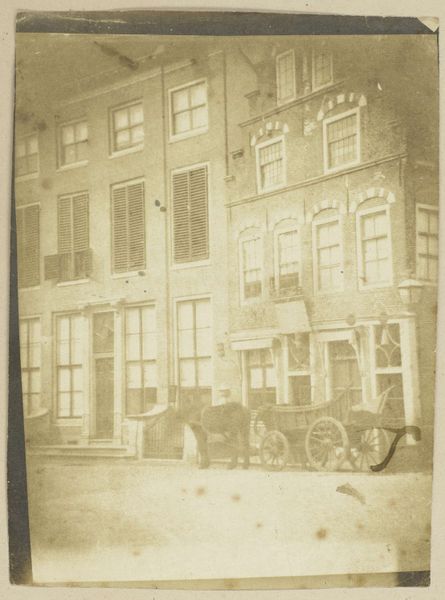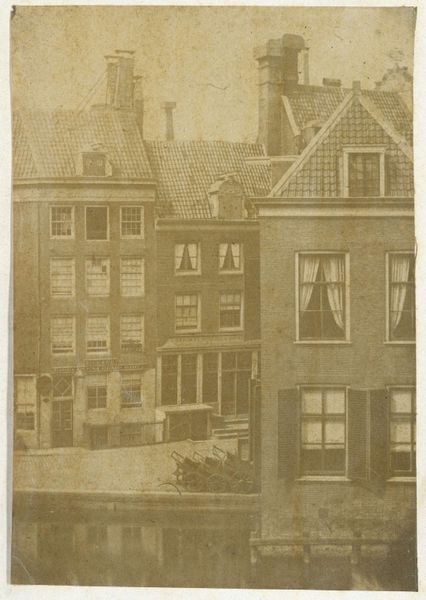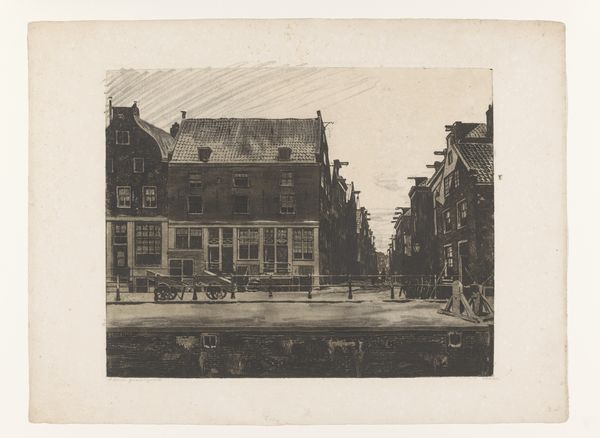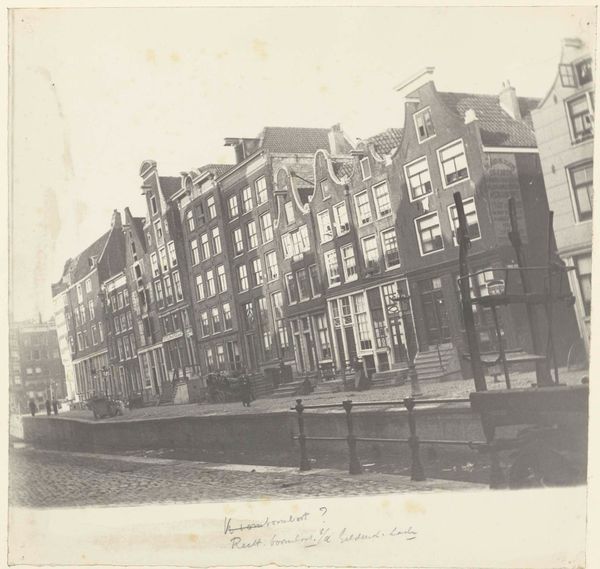
daguerreotype, photography
#
daguerreotype
#
photography
#
cityscape
#
realism
Dimensions: height 147 mm, width 106 mm
Copyright: Rijks Museum: Open Domain
Curator: Look at this daguerreotype; it's Eduard Isaac Asser's "Amsterdam, View of Reguliersbreestraat" from around 1853. I find it incredibly evocative. Editor: Wow, what a still and haunting atmosphere. The sepia tones and the stillness... It’s like the world is holding its breath. Everything's so muted, frozen, like looking at a memory. Curator: Exactly! This image is an early example of urban photography, showing us a slice of 19th-century Amsterdam. What interests me are the socio-economic dynamics captured in this supposedly objective image. Look at the architecture—it tells a story of wealth, trade, and power. The merchants would have been trading internationally at this time. Editor: I’m particularly struck by the composition. The street receding into the distance, the angles of the buildings—it's a beautiful interplay of light and shadow. I wonder about the technical aspects—the long exposure time required to create this image with a camera the size of a table top. The almost ghost-like lack of people in the photo is interesting... but do you ever get the feeling that you are about to step through a vortex? Curator: That's part of the charm of daguerreotypes—they make you reflect on time, progress, and the ever-changing urban landscape. I guess there are no pedestrians due to the length of the exposure, a snapshot of a very different way of life. And while daguerreotypes presented a slice of 'reality', who were they presenting it for? Was photography intended to be democratic or commercial? I feel we must look at whose stories were not captured and what role technology plays in these hierarchies. Editor: Indeed. You made me consider the idea that we're only ever getting a fragment of the truth, even in photography. I get this dream-like sense of a tangible world, something both intimate and lost forever. It’s like finding an old photograph in an attic. It ignites all kinds of narratives and imaginings... Curator: Absolutely. For me, looking at this photograph is an emotional time capsule that brings us closer to a world that still feels so immediate and tangible, although long gone. It captures something timeless and incredibly evocative about the essence of Amsterdam.
Comments
rijksmuseum about 2 years ago
⋮
Many pioneers, such as Asser, experimented by taking photographs from the window of their own house. This view of Amsterdam is a version developed from a wet collodion glass negative. Asser had shot the exact same scene in 1845, but then on a paper negative. These are the earliest photographs of Amsterdam. Initially the camera was aimed at the world nearby, but it was not long before photographers ventured farther afield with their cameras and equipment.
Join the conversation
Join millions of artists and users on Artera today and experience the ultimate creative platform.
